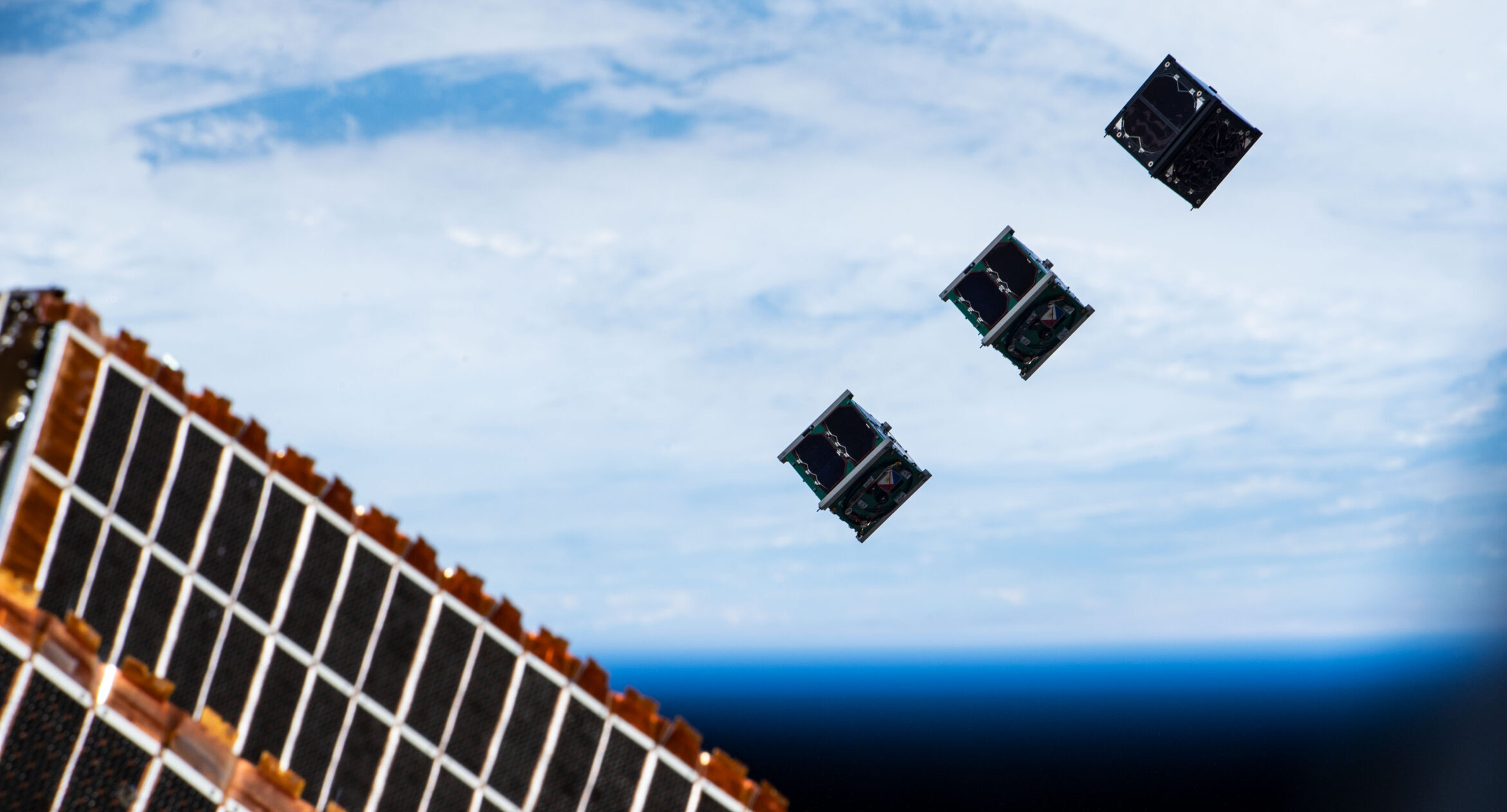BINAR
Revolutionising access to space.
Binar (pronounced BIN-ah) is the Noongar word for ‘fireball’, and these cube satellites[1] turn into binars upon re-entry to Earth. This program was built from the ground up by Professor Phil Bland and is now lead by Dr Fergus Downey and Dr Robert Howie at Curtin University. Students design and develop hardware that the Binar team launches into Low-Earth Orbit[2] (LEO) on single unit or 1U cube shaped satellites.
This is small spacecraft engineering, re-imagined. Binar is an integrated platform using ‘off-the-shelf’ electronics. This allows for cost-effective manufacturing. The Binar team prototypes satellites fast using a process of iteration. Then, through intense integration, the Binar team puts an entire spacecraft on a single circuit board. This means the satellites have a large capacity to deliver payloads. Australian universities, industry and defence now can advance their understanding of the solar system without depending on external agencies or data. Thus, this lowers the barrier for Australian space operations. Learn more about Binar’s facilities here.
The Binar and Binar-X programs are supported by Curtin University and the state government historical Department of Jobs, Tourism, Science and Innovation (JTSI). The new department is Department of Energy and Economic Diversification (DEED).
[1] A cube satellite, or cubesat, is a nanosatellite. These satellites use a standard size and form factor. One unit or 1U is 10x10x10 cms. They come in other sizes, such as: 1.5, 2, 3, 6 and 12U.
[2] Low Earth Orbit or LEO is an Earth-centered orbit with an altitude of less than 2,000 km.

BINAR-X
Putting space in the hands of WA.
The BinarX program is a unique collaboration between the Binar team and West Australian students. The students design and prototype science payloads for the Binar cubesat. The students then build the project for launch with Binar Space Program at Curtin University.
Students and teachers’ direct payloads concepts. Some of these concepts might include sensors to study our Earth and space environment and samples for testing in microgravity or in a vacuum. Other concepts may include a software-only payload running on Binar’s flight computer.
Meg Berry coordinates the BinarX program with funding from Curtin and the WA state government. BinarX currently has more than 100 students participating in teams from high schools across WA. Learn more about the BinarX program here.

